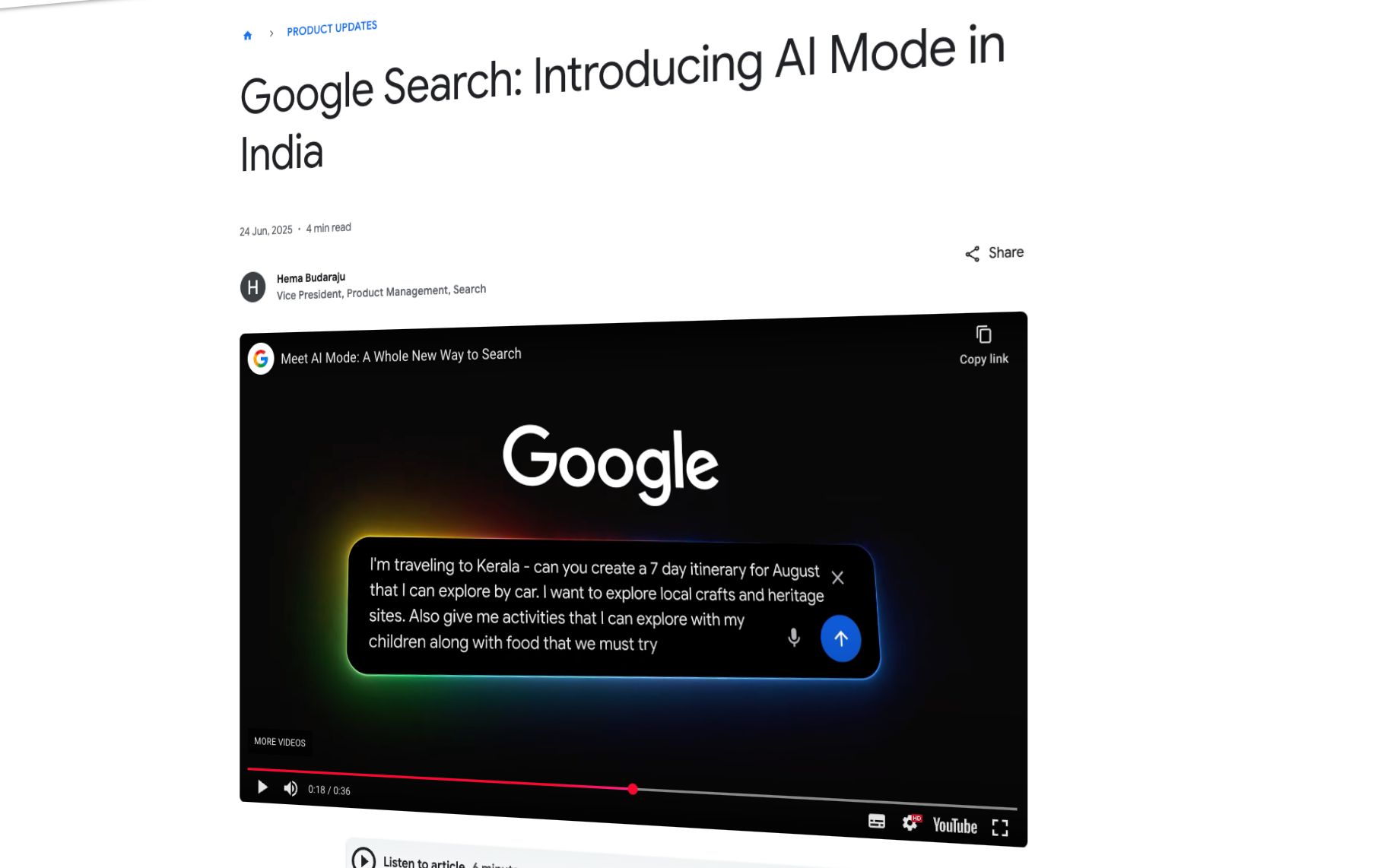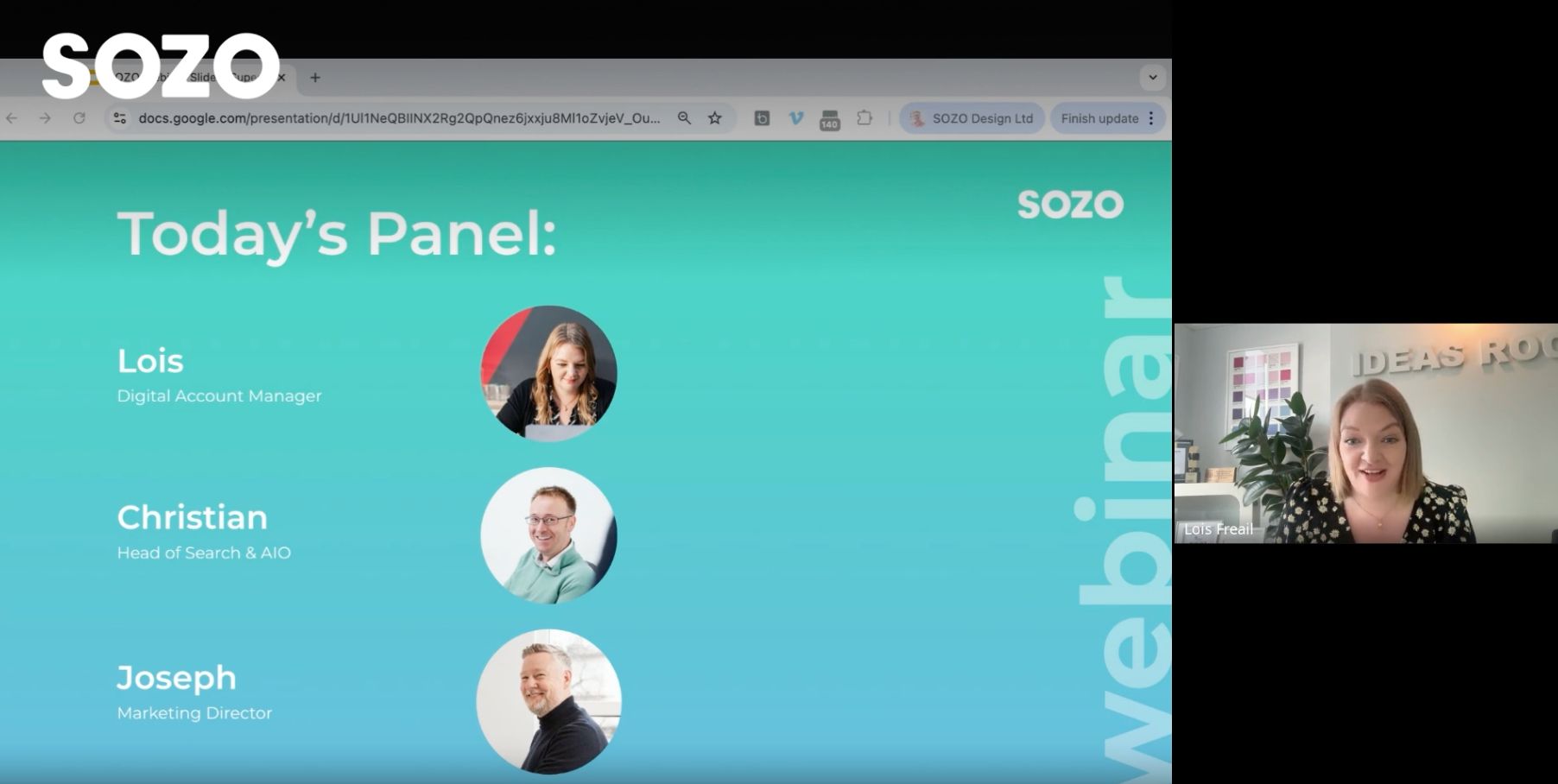Blog
How to Write AI-Friendly Content for Better Search Visibility

Christian
Head of Search Marketing

Search is changing fast. Tools like ChatGPT, Perplexity and Google’s AI Overviews are transforming how people discover and engage with content.
Traditional SEO is still essential, but it’s no longer the full picture. To really stand out, your content needs to work for humans, search engines, and now AI-powered tools.
In this article, we’ll explain why content strategy now means combining SEO with AIO, and how to write copy that performs in both worlds.
You’ll learn:
-
Why AI search tools are changing how people find content
-
How AI and Google assess content differently
-
Practical tips for writing copy that AI tools understand and use
-
How to structure content for clarity, context and trust
-
Why tone, topical depth and brand voice still matter
The future of search isn’t SEO or AIO. It’s both. And SOZO can help you master that balance.
TL;DR — Key Takeaways
-
SEO still matters – but AI is reshaping the rules. Content needs to work for search engines and AI tools like ChatGPT and Gemini.
-
AI-friendly content is clear, trustworthy and well-structured. It answers real questions in a natural, helpful tone.
-
Forget keyword stuffing. Focus on conversational language and topical depth.
-
Formatting matters. Use headings, bullet points and clean layout to help AI extract answers.
-
Show your expertise. Original insights and first-hand experience boost authority and visibility.
-
Keep content fresh. Update regularly with new data and visible timestamps to stay relevant.
What’s changing in search?
The way people search online is shifting rapidly. AI-powered tools like ChatGPT, Perplexity and Google’s AI Overviews are reshaping how information is found and presented.
While SEO still plays a vital role for visibility on platforms like Google and Bing, there’s now a new layer to consider: AI Optimisation (AIO).
Unlike traditional search engines that rank and list results, AI tools aim to interpret and deliver answers directly, often without sending users to a website at all.
So if you’re a marketer, copywriter or business owner, your content strategy needs to evolve. It’s no longer just about ranking in Google – it’s about being understood, trusted and referenced by AI.
Why AI Search is taking off
AI search tools are becoming part of daily life. ChatGPT reached one million users in just five days, making it the fastest-growing platform in history. It now receives more monthly traffic than TikTok, with an estimated 5.25 billion visits.

Google has introduced AI Overviews, which offer instant summaries in search results. Its new AI Mode, now live in the US and India, allows users to have conversational-style searches directly within Google.
These shifts reflect how people want to find answers: quickly, clearly, and without needing to sift through multiple links.
For businesses, this means adapting fast. While total search volume is growing, clicks to websites are not. Users increasingly get what they need without ever leaving the search interface – a trend known as “zero-click searches”.
To stay visible, your content needs to be accessible not just to search engines, but also to the AI systems that summarise and repackage the information they find.
How Google and AI choose content differently
To write effectively for both SEO and AIO, it’s important to understand how each one works.
Google relies on core SEO signals: keyword usage, internal links, mobile responsiveness, user engagement and authority (to name a few!). The goal is to rank the most relevant pages for a search query.
AI tools, on the other hand, function more like research assistants. They scan huge volumes of data and generate responses using large language models (LLMs). Rather than ranking results, they summarise content and respond directly to user queries.
AI engines tend to prioritise:
-
Contextual relevance – Does the content naturally relate to the topic?
-
Statistical grounding – Are claims backed by credible sources or data?
-
Clarity and structure – Is the content well organised, easy to read, and factually accurate?
Content that feels thin, vague or overly keyword-focused is less likely to be used. Content that is well written, clear and genuinely helpful is far more likely to be surfaced.
How to optimise content for AI at every stage
An AIO content strategy still follows the sales funnel. Your content needs to guide the user from awareness to consideration to decision. What’s different is how that content is understood and used by AI tools.
Top of Funnel: Awareness
Here, your audience is in the research phase. They’re exploring, learning, and not yet ready to buy.
Focus on writing content that answers broad questions, introduces key concepts and builds trust. Keep the tone natural and helpful.
Examples:
-
What Is AI Optimisation and Why Does It Matter?
-
How AI Search Is Changing Online Visibility for Businesses
Middle of Funnel: Consideration
At this stage, your audience understands their problem or goal and is weighing up different solutions.
Create content that compares options, provides clarity and answers nuanced questions. This is where AI tools often look for deeper context to shape their responses.
Examples:
-
SEO vs. AIO: What’s the Difference and Do You Need Both?
-
Case Study: How AI-Optimised Copy Increased Organic Traffic by 40%
Bottom of Funnel: Decision
Now your audience is nearly ready to convert. Your content should demonstrate the value of your offering and give users the confidence to act.
Examples:
-
How SOZO’s AI Optimisation Service Helps Brands Rank in AI Search
-
Everything You Need to Know Before Investing in AIO
Want to see these ideas in action? Watch our recent webinar, How AI Can Supercharge Your Ecommerce Growth. We share real examples of how AI is transforming the customer journey, and how brands are using it to get better results.

You can also explore our webinar on mastering Google’s AI Search, where we share six practical ways to increase your visibility in AI Overviews and adapt your content for the future of search.
What makes great AI-friendly content?
Creating content for AI is less about technical tricks and more about being genuinely useful and well structured.
Here’s what makes content stand out:
Topical relevance
Write in a natural way that reflects how people actually search. Go beyond keywords and demonstrate depth of knowledge.
Clear structure
Use headings, bullet points, short paragraphs and a logical flow. The easier your content is to scan, the easier it is for AI to interpret.
Factual trust
Support your points with data, research or expert commentary. Where possible, cite sources or include first-party insights.
E-E-A-T principles
Experience, Expertise, Authoritativeness and Trustworthiness (E-E-A-T) matter to both Google and AI systems. Use real examples, first-hand knowledge and original thinking to show your credibility.
Human tone
Avoid sounding robotic or overly polished. Use plain, accessible language and keep your tone conversational.
Topical depth
Cover the topic thoroughly. Anticipate follow-up questions and include related ideas to add context.
Freshness
Keep your content up to date. Use “last updated” tags, refresh statistics, and revisit high-performing pages to add new data or FAQs.
Machine readability
Add schema markup, use descriptive image alt text, and write strong meta titles. These small things help AI tools make sense of your content more easily.
Use AI to optimise, but keep it human!
AI writing tools are helpful for drafting, structuring and editing – but they can’t replace your voice.
Your audience still wants to hear from you. That means stories, perspective, and a tone that feels human and on-brand.
Use AI to streamline the process, but make sure the result is distinctly yours. That’s what makes your content more valuable than the thousands of generic posts out there.
Introducing our AI Optimisation service
We’ve created a dedicated AIO service to help brands get found not just on Google, but also in AI-powered platforms like ChatGPT and Gemini.
We help ensure your content is:
-
Structured for AI and search engine readability
-
Written with clarity, context and statistical relevance
-
Aligned with your tone of voice and commercial goals
-
Built to perform across SEO and AIO environments
Our expert team knows how to strike the right balance between human storytelling and AI-ready precision. We don’t just write for rankings, we write for results.
Final thoughts
The future of content isn’t about picking SEO over AIO. It’s about combining both to stay visible wherever people, or machines, are searching. That means creating content that is clear, helpful and grounded in your own expertise. Not sure where one ends and the other begins? Our guide on AIO vs SEO explains the key differences, and why they work best together.
Ready to make your content work harder across Google, ChatGPT, and AI Overviews? Our team can help you write with purpose, structure for visibility, and stand out where it matters. Get in touch today, we’d love to hear from you.
Sign up to our newsletter
Keen to learn more about how to grow online?
Get our latest advice articles, masterclass
videos and webinars.
curious for more?














